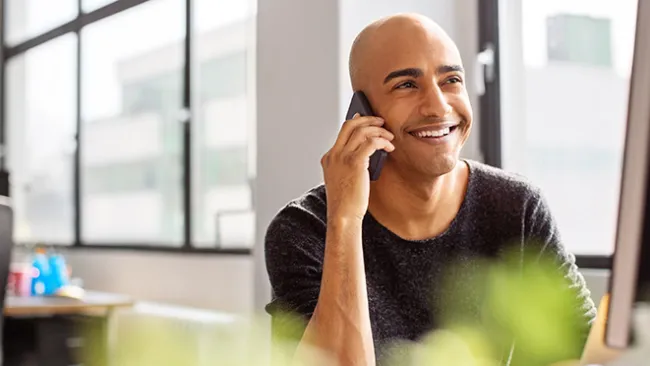A forward-thinking strategy is the best solution for overcoming uncertainty. For CX-leaders in the contact center space to overcome the fallout from COVID-19, the digital, remote, and perseverance strategies that carried them through the crisis in the first place may be their best move.
TTEC’s webinar, Shifting Back: How to prepare for what’s next in the contact center, discussed the innovations needed to build a long-term digitally resilient organization. Here are three strategies worth embracing.
1. Seize the distributed workforce model
Before COVID-19, many contact centers were operating in varying degrees of centralized hubs. Organizations that primarily focused on brick-and-mortar models were forced to rethink the notion of a distributed workforce.
We are now seeing incredible geo-diversification of the labor force. CX leaders in the space are embracing decentralization and becoming more flexible to virtual models. They can now utilize an agile workforce that can be redistributed the globe with a hybrid of brick-and-mortar and virtual associates. The newfound agility of their workforce helps organizations minimize the previous risks from over concentrating in certain markets.
The historical shift from physical centers is currently a temporary model, plan for a portion of agents who may wish to stay home or become incorporated in a rotational mode. Consider how this new workforce may fit into a hybrid virtual and brick-and-mortar model.
When strategizing the future of your distributed workforce, consider:
- Real estate needs and costs
- On-demand technology enablement and security
- Blending virtual and brick-and-mortar attributed staff
For the foreseeable future, there will be less density in physical centers and decreased reliance on real estate. These factors will call for deeper investments in digital transformation tools that will enable employees and customers to better use self-service through intelligent knowledgebases and chatbots.
2. Invest in readiness
Many organizations invoke triage strategies that served the needs at the top of the funnel while de-prioritizing less critical interactions. While necessary, it resulted in organizations deflecting many interactions.
These emergency protocols were rolled out too quickly and CX leaders will need to be more prepared next time. Organizations should be poised to scale fast and invest in technology that allows them to be prepared for the unexpected even faster.
When planning for future crisis invest in:
- Triage strategies
- Case management and workflow capabilities
- Exception-based operating rules pre-vetted and approved
Part of this will rely on the ability to pivot and scale support capabilities from your remote workplaces. But you will also have to rethink training and vetting your agents for rapid onboarding during emergencies. This will be driven by digitally enabled training so all the pieces are in order before disaster strikes.
3. Take the lead with digital
Digital transformation is here to stay. The pandemic created a cultural and behavioral shift that is going to drive new innovations in the field. The contact center must take the opportunity to be at the forefront.
The massive drive around digital adoption is in part due to the need to interact with other human beings. It’s becoming a testing ground for organizations to see just how well they can provide authenticity with ingenuity.
Chatbots and automated capabilities are making massive strides in deflecting low-effort interactions. But as the digital front door swings open, it adds more pressure to upskill your labor force to complete complex interactions. It means that it’s time for AI to step up for the simple things.
Invest in automated capabilities that can handle complicated tasks with discretionary authority. This can be accomplished by utilizing chatbots as a virtual co-worker with remote agents to provide relevant suggestions and prompts for highly emotional conversations.
As you digitize remember:
- Digital transformation is no longer a luxury
- Digitize and automate to unlock self-service
- Social distancing=need for distributed interactions
- Nature of labor talent needs will evolve
Innovate one step at a time
Embracing the new standard lies heavily on a leader’s ability not only to recognize change but act upon it. And it’s okay to start small. Focusing on high-impact, low-effort strategies will achieve quick wins and gain buy-in across the organization. Then build from there. It’s important not to get bogged down by tackling all these strategies at once.
Watch the full webinar, Shifting Back: How to prepare for what’s next in the contact center, to learn more about what it takes to ensure business resilience for your contact center.















